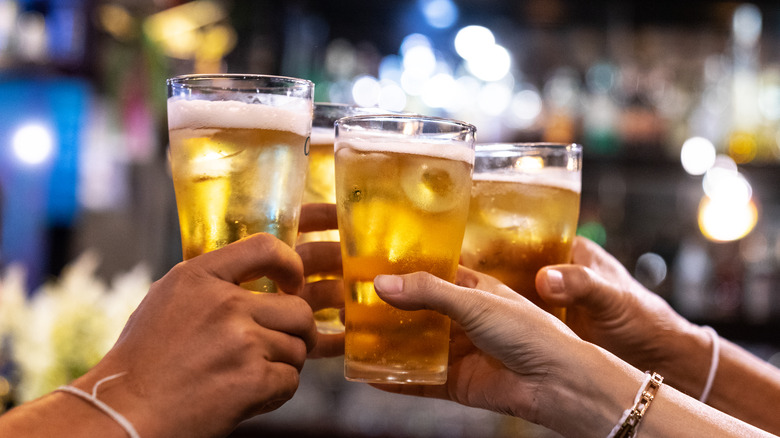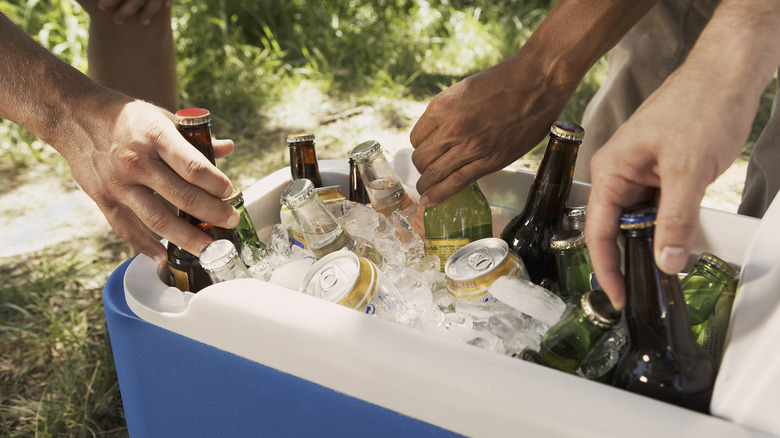Why You Should Avoid Ordering Beer And Ale In Frosted Glasses
Beer is an acquired taste, and a rather bitter one, but once you've gotten into it, there's a lot of variety in all those craft beer tallboy cans you see at the store. If you're trying to get more into beer, there are small but effective ways to draw out more flavor, and the temperature of your beer glass is one of them. Beers should be cool, not ice cold, and you should avoid ordering beer — or serving beer, if you've got guests — in a freezing cold glass.
A frosty glass is going to mess up the taste of the beer, because colder temperatures impact flavor, and an ice-cold mug will reduce both the aroma and the hoppy, malty flavors in a good beer. The end result is tasteless beer. There is typically one exception: light domestic beers, not craft beers, can often be served in frosty glasses. This is because super light beers like Bud Light or PBR are meant to be refreshing, not flavorful, and so freezing the beer glass this way can help make the beer easier to chug. That's typically why a restaurant has frosted beer glasses in the first place, and why some craft beer fans may get a bit snobby if their drink comes served this way.
Frozen glasses reduce beer flavor
How would beer lose its flavor in a frosted pint glass, you might ask? One reason is that freezing temperatures numb your taste buds, making it harder to taste your food. A longer answer is that different flavors have different ideal temperatures where they're strongest, and other temperatures where they're diluted and harder for your taste buds to detect. Bitter flavors (like the bitter-tasting hops in beer) are strongest at lukewarm or cold temperatures, but they lose potency at freezing or overly hot temperatures.
If you're really getting into the weeds (or getting into the hops), different beers have different ideal temperatures, although they all hover around lukewarm or lightly cold. Most beers do best at around 38 to 55 degrees Fahrenheit, while those light beers are more at home in coolers at 33 to 40 degrees Fahrenheit. Lagers should be slightly colder than ales — lagers are also brewed at colder temperatures — while the ideal temperature for Guinness beer is about 46 degrees, because dark beers are served slightly warmer than lighter-colored beers. If you're somebody who only drinks beer to take the edge off a hard day, then all of this is pedantic. For foodies with a taste for beer, though: don't order frosty ales.

